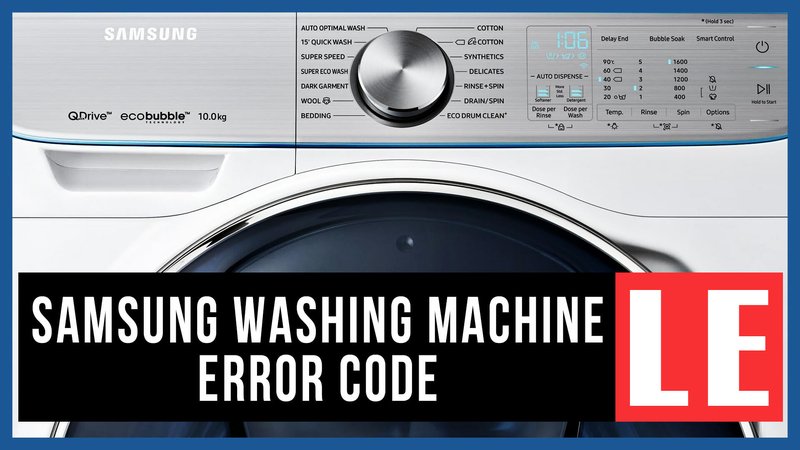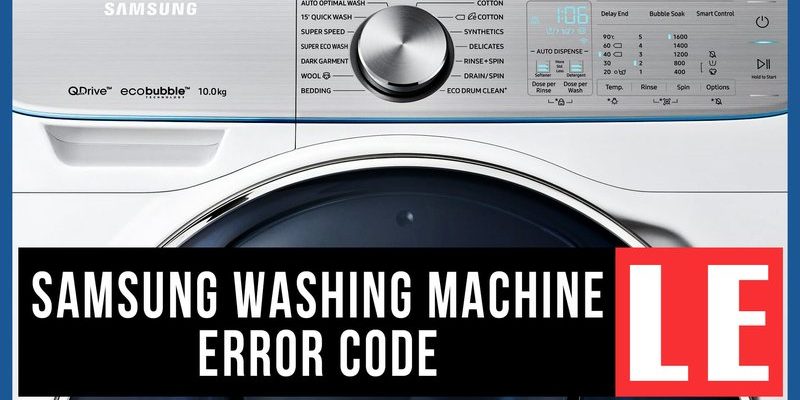
You might be wondering if this kind of issue is something the warranty will cover. After all, nobody wants to deal with an unexpected repair bill, especially when you thought your appliance was protected. Warranties can often feel like complicated insurance policies, full of fine print and exceptions. But don’t worry, we’re going to break it down step-by-step, so you’ll know exactly what to expect and what to do next. By the end of this article, you’ll have a clear picture of whether your washing machine’s woes are covered—or if you’ll need to take other steps to fix it.
Understanding the Samsung Warranty for Washing Machines
So, let’s dive into how warranties work for your Samsung washing machine. A warranty is like a safety net that covers certain repairs or replacements during a specific period after you purchase the machine. Samsung typically offers a one-year limited warranty on most of their appliances. This means that within the first year, many issues due to manufacturing defects should be covered without any cost to you. However, not everything is included, and that’s where it can get a little tricky.
For error code LE, the issue often relates to the internal components of the machine, such as the water level sensor or motor, which are usually covered under the warranty. If the problem stems from a manufacturing defect or a failure of these components, you might be in luck. But there’s a catch, and it’s a big one: if the problem arose from user error or an outside factor—like flooding in your laundry room—that’s often not covered.
It’s crucial to keep your original receipt and documentation handy. This paperwork is like your passport in the warranty world. Without it, you might face challenges proving your warranty claim. Additionally, always read your specific warranty manual. There might be particular terms and conditions unique to your model that could influence coverage. If you’re unsure, a quick call to Samsung’s customer service can clarify whether the LE error code falls under your warranty or not.
Common Causes of Error Code LE
Okay, now that we’ve got the warranty basics down, let’s talk about what might be causing this pesky error code. Think of your washing machine like a well-oiled machine—every part needs to be working in harmony for it to function properly. The LE error code typically signals a disruption in this harmony, often linked to water-related issues.
One of the most common culprits is the water level sensor malfunctioning. This sensor is like the eyes of your washing machine, ensuring it uses just the right amount of water for your load. If it’s on the fritz, your machine might start acting up. Another possibility is a problem with the water inlet valve, which lets water into the machine. Imagine trying to fill a cup with water from a fast-dripping tap—it’s frustratingly slow and inefficient. That’s what your washing machine experiences when the valve isn’t working properly.
Sometimes, the issue might be due to an imbalance within the drum or a leak that’s gone unnoticed. Think of it as trying to wash clothes in a wobbly bathtub with a crack—you’d have a mess on your hands. These issues can sometimes trigger the LE code as well. Knowing what’s behind the error can help determine if it’s something you can troubleshoot yourself or if you need to call in the pros.
Steps to Addressing the Error Code
Got the error code? Don’t panic. There are a few simple steps you can try before calling for service. First, turn off your washing machine and unplug it. This is like giving it a quick nap to reset its internal systems. After a few minutes, plug it back in and turn it on to see if the error persists. Sometimes, a simple reboot can do wonders.
If the error code pops up again, check the water connections. Ensure hoses aren’t kinked and that valves are open properly—just like checking that your garden hose isn’t twisted before watering plants. You can also inspect for obvious leaks or puddles around the machine. If you notice any, try tightening the hoses or calling a plumber if it looks like a bigger issue.
Still seeing the LE code? It might be time to reach out to a professional. Contact Samsung’s customer support to discuss the problem. They can guide you on whether to book a service appointment and how your warranty might come into play. If it’s covered, they’ll usually send a technician out to resolve the issue for you without any additional cost.
Preventative Tips to Avoid Future Errors
Nobody likes dealing with appliance errors. They’re inconvenient and can throw a wrench in your daily routine. So, what can you do to prevent the LE error code—and other issues—from happening in the future? Regular maintenance and a little bit of TLC for your washing machine can go a long way.
First, always use the recommended amount of detergent and the correct type for your washing machine. Too much detergent can lead to excess suds, which might trip up the sensors. Think of it like overloading a cake with too much frosting—it just doesn’t work as well as you’d hope. Run regular cleaning cycles if your model has them, or use washing machine cleaner tablets to keep the drum and internal parts fresh.
Secondly, avoid overloading your machine. Each model has a maximum load capacity, and stuffing it full of clothes can lead to imbalances and stress the components. It’s like trying to carry a mountain of groceries in one trip—it’s better to make two trips than risk dropping everything.
Lastly, keep an eye out for any signs of trouble, like unusual noises or cycles taking longer than usual. Catching problems early can prevent a minor issue from turning into a major headache. By following these simple tips, you’ll ensure your washing machine stays in good working order—and hopefully, error-free.
In conclusion, while the Samsung LE error can be frustrating, understanding the warranty coverage and taking proactive measures can keep your washing machine running smoothly. So, next time something goes awry, you’ll know exactly what to do.
